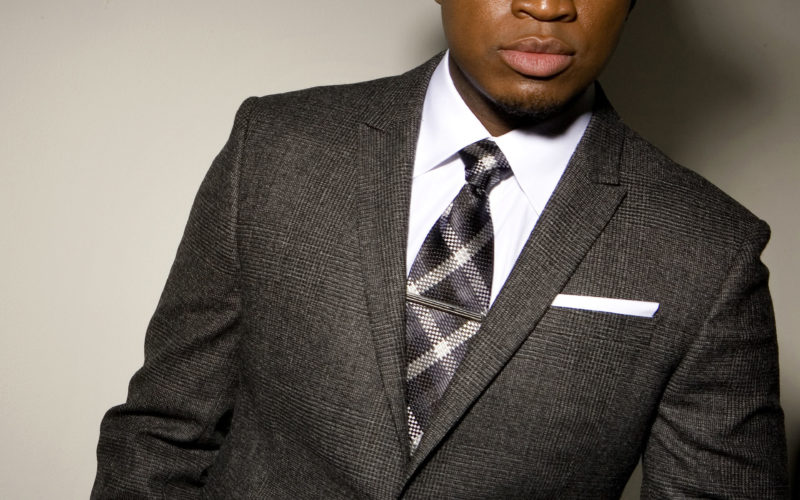Q. I recently noticed how good my boss looks in certain shirts and I think this is exactly your point when you write about choosing clothes based on coloring. He wears green plaid and graph-paper patterned shirts and they seem to work well with his light brown hair and his pale complexion. This made me wonder what colors/patterns I should choose, given my Mediterranean coloring: brown eyes and hair, olive skin). My workplace is casual, so I’m thinking of shirts, polos, pants, and maybe sweaters.
A. I’m glad you realize that people notice when someone uses color to his advantage. Of all the elements at your disposal, nothing makes as much of an impact, with as little expense, as choosing colors that flatter your own coloring.
The world is pretty much split into people with fair coloring who can choose to wear almost any color and will look good, and those (of us) with darker coloring who must pay more attention and carefully choose the right colors to wear. Before setting out for a clothing store or an online shopping site, be sure you know which colors will make you look your best.
In the past, when it came to business suits, the three colors considered acceptable by the business world were gray, blue, and on occasion, tan. Well-dressed men chose blue and gray in the medium to dark range, and brown suits were confined to light tan. But in today’s business world, as your question confirms, fewer men are wearing suits. Instead, their work environment wardrobes are largely based on which shirts and sweaters will look good with khaki pants.
Beyond which suits to buy, your range of colors increases dramatically. Here are some basic rules concerning skin coloring and how to narrow your choices to those colors that bring out the best in you. You’ll then know which shirts and accessories to wear to bring a lift to a man’s appearance.
If you have dark hair, dark eyes, and sallow, olive, black or brown coloring. Most grays are not flattering near your face. Neither are most browns. Grays and browns are likely to have a “draining” effect, actually detracting from your natural good looks. You can wear any color dress trousers or casual pants, because they are not near your face and can be “sparked” with tops in so many light, bright, flattering colors.
The most widely accepted men’s color is blue. Of course, while you can’t build your entire wardrobe on blue, you can emphasize it. Your clothes should be varied in lightness and darkness, in pattern, and in fabric. Designs can range from solids to subtle and not-so-subtle patterns in light to dark shades. Brighter and bolder patterns work nicely for social events; subtler colors are usually emphasized for serious business.
And you could use a nice collection of sweaters in place of the blazers and sport coats that once were wardrobe staples. The various sweater styles include crewnecks, V-necks, turtlenecks, half-zips, sleeveless vests, long-sleeved pullovers, and cardigans. Their huge range of designs – from solid colors to wildly colorful patterns – can make for wonderful variety.
Here’s a cautionary note: certain shirts and sweaters will flatter dark or olive skin more than others. Warm colors and bright colors look good: crisp white, clear ivory (not the beige cast of “ecru”), light blue, soft pink, pale purple, and bright yellows and oranges will all work nicely with pants in any neutral shade from khaki to navy, gray, or black. All these can overcome the somber “washed-out look” that a man with your coloring may take on when wearing a top in muddy colors such as olive, mustard, beige, or gray . . . colors that don’t compliment dark skin tones. Wear warm colors; the contrast benefits the dark-skinned man. Avoid black and dark brown. It’s all about complementing, not matching.
In essence, contrast your coloring with clear, flattering colors in your shirts, ties, sweaters, and scarves. And don’t overlook the many handsome patterns that shirts come in, from checks and plaids to stripes of every width.
If you have light hair and complexion and light eyes. With sandy-colored hair and blue eyes, you look your best in tan that repeats your hair color, and in blue that accents your eyes. Still, you don’t want to wear tan and blue all the time. And you certainly don’t need to. You are lucky in that you have a can’t lose choice: you can go either way. Either you can wear soft colors that repeat your own coloring, or you can contrast your complexion with dark or bright tops . . . both are handsome, flattering looks.
With just a bit of planning, you’re sure to look great.
Please send your men’s dress and grooming questions to MALE CALL: Lois.Fenton@prodigy.net









